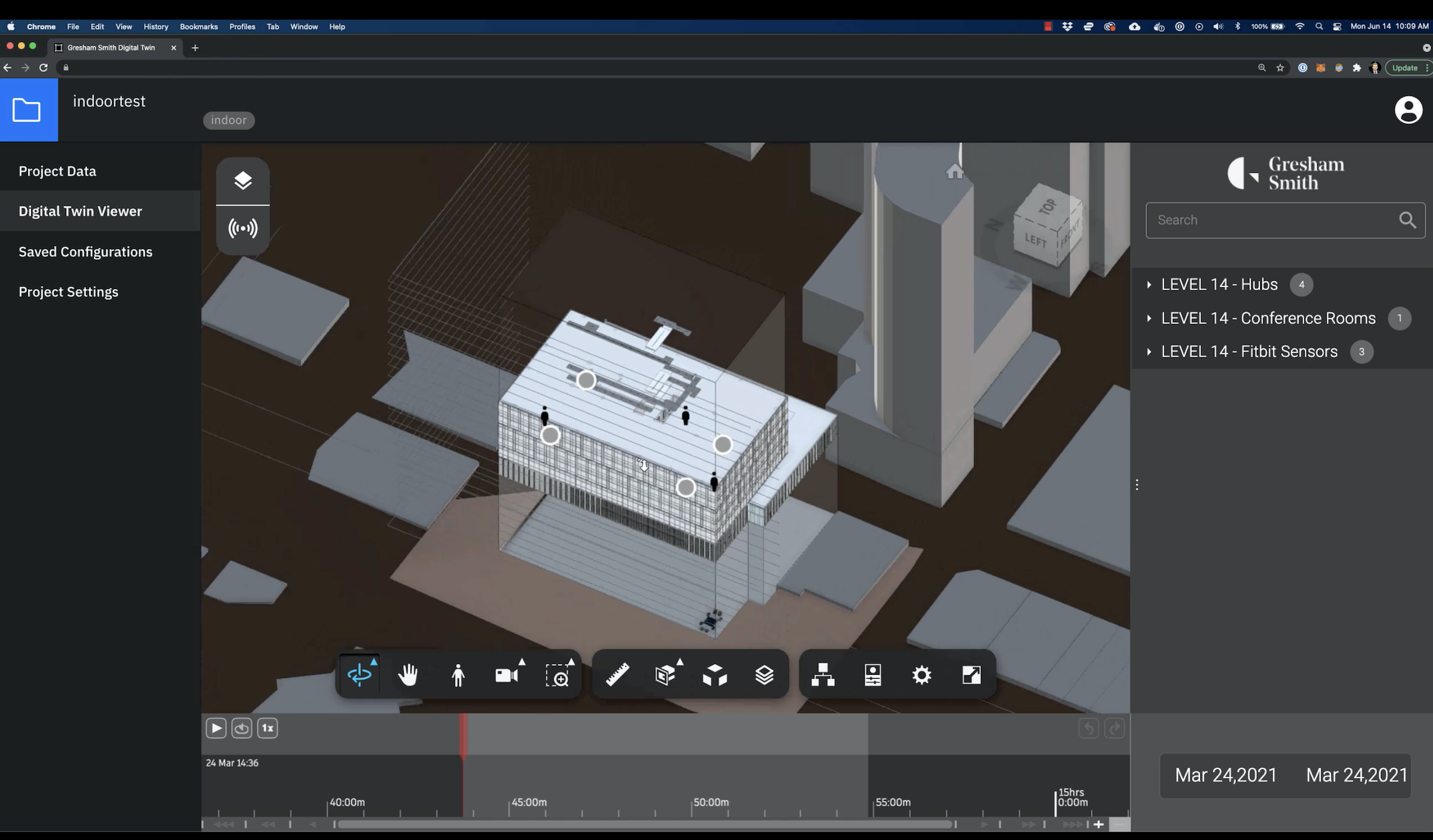Ready to Get Started?
Try Autodesk Platform Services for free by setting up an account and free trial. Explore the resources to learn about the solutions you can build using design and engineering data.

Since 1967, architecture and engineering firm Gresham Smith has been serving clients in multiple industries ranging from aviation and health care to transportation and water infrastructure. Not only does the firm have diverse experience, but it also has a vision: to genuinely understand the experience of users in the places the firm creates.
The facility management sector is making great strides in the ability to uncover data-driven insights and opportunities in building operations. However, the industry is not nearly as knowledgeable when it comes to understanding human experiences in those buildings—how people perceive a physical space and how the design of the environment can drive both positive and negative human experiences.
Historically, a lack of hard data in this area has made it difficult for decision makers to create and improve physical spaces based around human factors, such as stress and movement patterns. More recently, wearable sensors and biometric data are unlocking fascinating opportunities to understand the impact of design.
Gresham Smith recognized the potential to derive design insights by not only studying how people are using a space, but also by tracking their perceived stress levels based on heart rate data. The spatial nature of the information required a digital twin platform for hosting the data analytics and visualization, so the Gresham Smith team evaluated a number of options.
For outdoor environments, the team had already built a platform using an open-source framework, but a different solution was required for indoor architectural environments. Ultimately, they decided to develop a prototype using the Viewer and Data Visualization APIs because of the BIM (Building Information Modeling)-friendly nature of the software and the flexibility it provided for creating a customized architectural digital twin.
The team created a proof of concept, which included an architectural model that displayed both the building in focus and the urban context in the immediate vicinity. The team implemented two primary data “stories” in the digital twin. One story relied on ambient environmental data—such as temperature, humidity, and light levels—coming from four sensor nodes installed in the ceiling of one of the building floors. The other story relied on the aggregation of location and heart rate data from three volunteers moving through the space.
The team used the Viewer API’s Data Visualization extensions to create and display heat maps that conveyed the environmental data throughout the space, and moving sprites that conveyed the “ant trails” of the volunteers’ movements through the space, along with their associated stress levels. By combining mobility data with the Data Visualization extensions, Gresham Smith was not only able to generate current and historical visualizations of how people interact in a space, but also make the connections to understand how the environments and external factors can impact overall experiences within it.
Autodesk Platform Services highlights include the following:
Gresham Smith provides real-time data on asset and occupant behavior and experience
